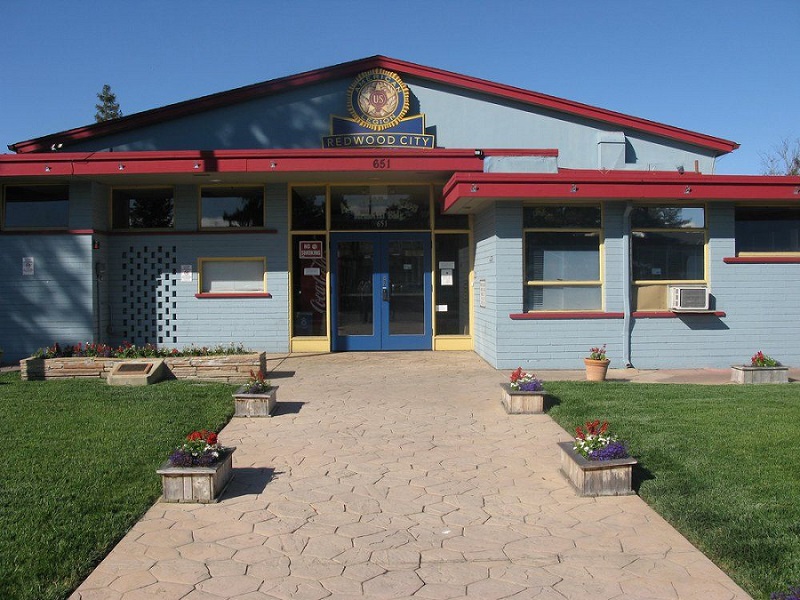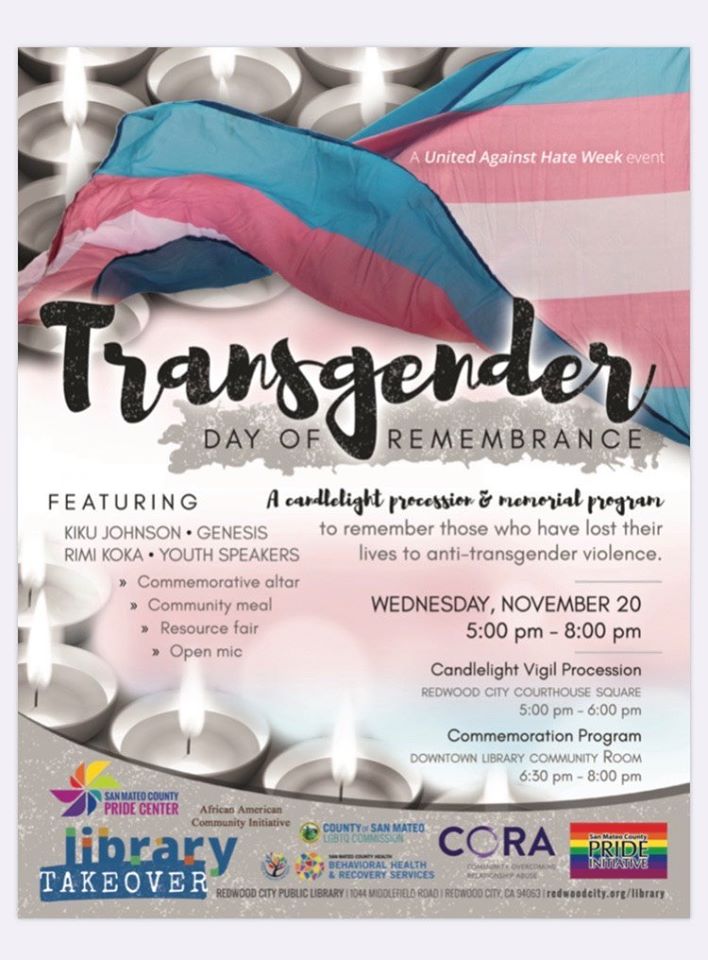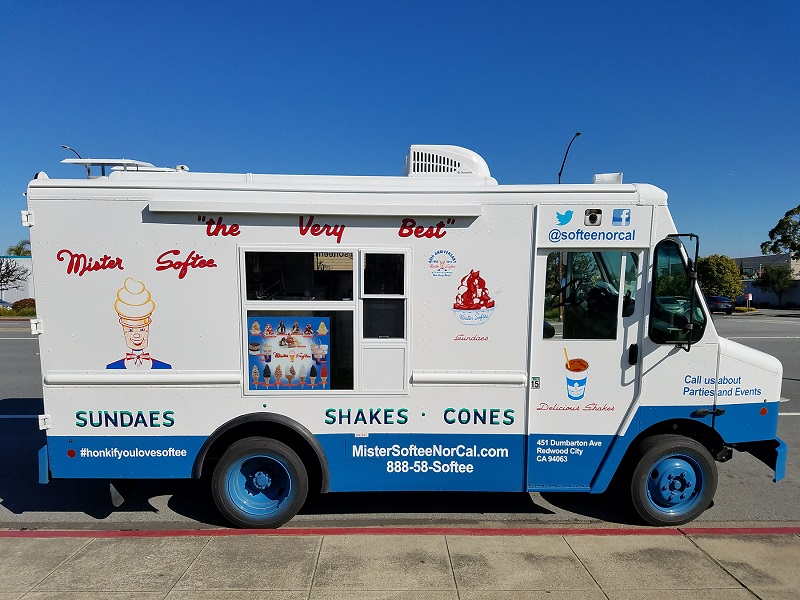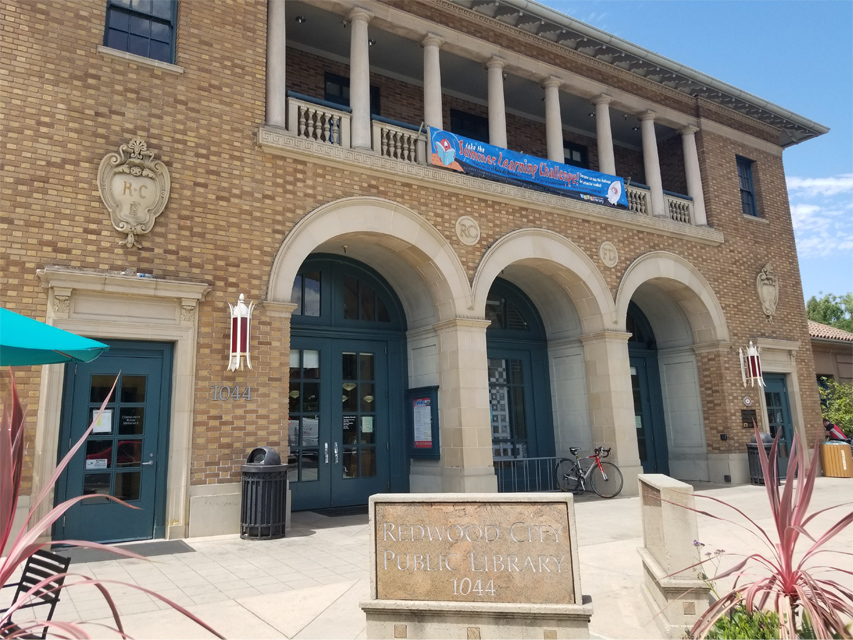Stanford’s new, innovative tools to address chronic pain

“In a world of hurt.” It’s a figure of speech not meant to be taken literally. But it’s a real place to those who inhabit the world of persistent pain, one whose moment-by-moment ramifications can upend and redefine life.
There’s a continuum in this world of hurt: Pain is variable and many manage it themselves without going to the doctor. They can hold jobs and function, albeit through varying levels of pain. For others, severe chronic pain can mean an inability to sit comfortably, or far worse, to fall off to sleep at night, day in and day out. For some, pain brings an inability to work, to get out and see friends, to travel or to take in a movie. And, with those compounding, cascading inabilities, an ever-shrinking solitary “world” because of hurt.
The threat of even more hurt must be defended against. “When you have chronic pain,” says 27-year-old Erika Delgado of South San Francisco, who has suffered with it her whole life, “it’s like constantly being in flight mode. You constantly feel that you’re in danger.”
Often patients are reluctant to talk about pain that may send them to one doctor or therapist after another. Or pain that doesn’t have a clear diagnosis, or pain that doesn’t look obvious. They go stoic. “You adapt,” says “David,” a 68-year-old former executive who has been dealing with the after-effects of a sports injury and two back surgeries for two decades. “At some point, you’ve got to say that what you’ve got is what you’ve got.”
Despite the constant burning sensation in his back, the healthy appearing Redwood City resident tries to cope with his chronic pain quietly — and, as much as possible, anonymously. “Nobody wants to acknowledge their disability,” says David, who nonetheless manages two contradictory things: an active schedule as a community volunteer – and usually only two hours of sleep a night.
Except for those born with a rare congenital insensitivity which makes them literally feel no pain, everyone experiences it. A 2018 report for the U.S. Centers for Disease Control and Prevention estimated that 50 million Americans suffer from some form of chronic pain, and of that number, 19.6 million have pain severe enough that it frequently limits life or work activities. The economic toll is an estimated $560 billion in medical care, lost productivity and disability programs. The prevalence of pain, not surprisingly, goes up with age.
Pain, however, is actually beneficial, warning of danger so people can respond, for example, by pulling a hand away from a hot surface. Episodes of acute pain go with the territory for stubbed toes and broken bones, but the symptoms usually resolve as the tissue heals or bones mend. Persistent, or chronic pain, on the other hand, can become a disease in its own right, as the nervous system over time becomes rewired, even spreading pain beyond the original area. That’s one of the reasons why it can be so challenging to treat and so frustrating to those who live with it.
If there’s good news in all of this for Peninsula residents, it’s that advances are being made in better understanding the causes and effective treatments for pain, and with that the ability to offer more personalized approaches for targeting individual patients. Whether high-technology brain imaging, or no-tech therapies like breathing exercises and yoga, there are more alternatives available than just going home with a prescription for pain pills — something the nation’s opioid crisis has elevated as an urgent concern.
Dr. Sean Mackey is chief of the division of pain medicine and director of neuroscience and the pain lab at Stanford University. He leads a multidisciplinary team which brings academic research findings into a clinical setting to help patients alleviate longstanding pain — and even to prevent pain, notably following surgery, from transitioning from acute to chronic. “Our message,” Mackey says, “is that you don’t have to suffer in silence, that there are approaches that can help.”
Stanford Health Care’s Pain Management Center at 500 Broadway in Redwood City is one of the largest, most comprehensive pain centers in the United States, if not the world, according to Mackey, and has twice been designated a Center of Excellence by the American Pain Society. Physicians from multiple disciplines including psychiatrists, physical therapists, nutritionists and others get involved treating patients.
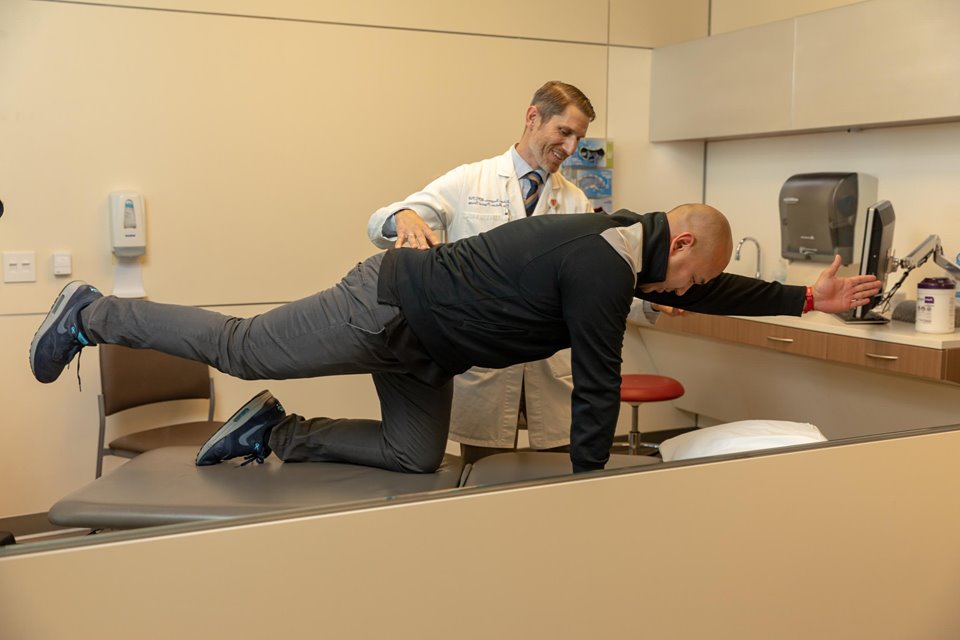
“One of the things that I think is unique to the Stanford program is that we integrate our research and clinical missions very tightly,” he adds. Clinical knowledge can feed researchers with questions to go after, and research discoveries are translated into safe, effective therapies. One example of something that is being tested is transcranial magnetic stimulation – “brain zapping” – using something like a coil placed on top of the patient’s head. “It doesn’t hurt,” Mackey says. “There’s no pain and you can induce a current through it that generates a magnetic field that can activate different brain centers, and we can turn on and off the brain systems that are associated with pain. And we’ve had some really good results with it.”
Stanford has been recruiting volunteers for further study of the efficacy of TMS for two kinds of pain, one of several studies that are planned. Another one is seeking evidence of the benefits of acupuncture for low back pain.
The Stanford scientists also study novel applications for medications, according to Mackey, as an example, repurposing naltrexone, which was originally used to treat drug and alcohol addiction. “But at much lower doses, like one tenth of the usual dose, it has a completely different action,” he says. “It blocks nerve inflammation so it’s been very useful with fibromyalgia, which predominately affects women in their 30s, 40s and 50s, as well as some other chronic painful conditions.”
Among the other new alternatives, Stanford is also using implanted devices that can override pain signals to a specific nerve and provide relief.
If the body had only a single “pain center,” obviously treating pain would be much simpler, but many parts of the brain and neural pathways are involved in the pain experience. One of the problems when pain becomes chronic is that it can alter both the peripheral nervous systems and the brain and spinal cord “so that it amplifies the experience of pain and that magnifies it,” according to Mackey. When that occurs, someone who has come through an injury or surgery may no longer need the original signals to keep on feeling pain.
What is experienced as pain relies on many sensory cues, among them emotions, beliefs, thoughts and expectations, and one of the factors that can feed into chronic pain is known as “catastrophizing.” The big word can apply to anything. Bills. The job. The country. But with pain, rumination, hopelessness and a feeling that the condition will never get better can trap the brain in an endless loop that is very difficult to break out of.
But the pain is still real. Unfortunately, in part because it’s “invisible,” patients commonly report feeling they are being blamed for their pain, according to Stanford associate professor Dr. Beth Darnall, who has a doctorate in clinical psychology and is a pain scientist. “(It’s) a misperception that somehow people are saying pain is all in your head. ‘You’re making it up. It’s not real. There’s not a medical basis for your pain, therefore there must be something wrong with you’ … (But) all pain is real. I always say that at the outset. All pain is real.”
One of her primary interests is in developing low-cost, accessible treatments that empower patients so they can “begin participating in managing their symptoms rather than feeling at the mercy of them” — among them cycles of poor sleep, persistent worry and feeling helpless. Darnall, who teaches a class on this at Stanford’s Redwood City clinic four times a year, says studies demonstrate that in two months or so of cognitive behavioral therapy, improvement can be shown. “They have evidenced substantial volumetric increases in the regions of the brain associated with brain control — so literally increasing the brain matter in those regions that associate better regulation of pain.”
It’s long been established that cognitive and behavioral therapies are important in addressing chronic pain. “What’s different is that we’re now focusing more and getting people better access to what works,” she says. Rapid access to relief is “kind of where the rubber hits the road.”
Pain physician and professor Dr. Ming-Chih Kao is chief of Stanford’s network of pain clinics (including the one in Redwood City), which is expanding geographically: Patients who are already in pain benefit because they don’t have to drive so far for treatments and can come in more often.
Kao started his career in internal medicine, intending to focus on cancer as his specialty, but decided to switch to pain management – in part because of how common pain complaints are, headaches and back pain topping the list. “In the primary clinic that I saw … about 20 to 30 percent of my patients could benefit from a pain specialist,” he says. But the diagnosis and treatment of pain, he also saw, is very complicated and requires a team approach.
When he started at Stanford as a fellow, patients routinely were coming in who had been prescribed very high dosages of opiates. Primary care doctors, he says, were trying to do the right thing to reduce pain but “the nature of opiate medications is that patients get used to it very quickly. They develop tolerance. … They had to escalate the dose again and again and again. And pretty soon, some patients are finding themselves taking astronomical doses. And still not getting pain relief.”
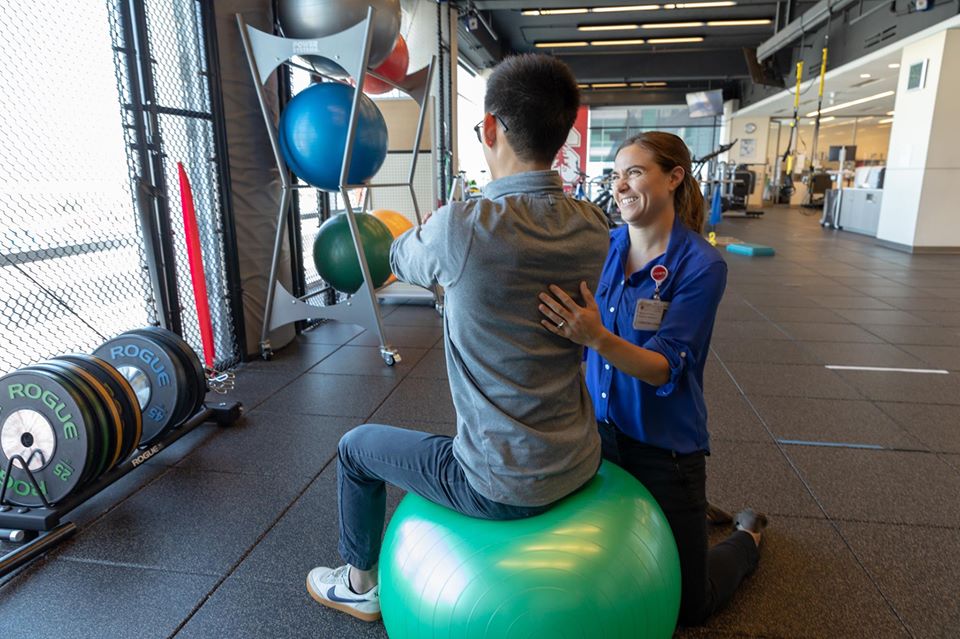
The issue has taken on new urgency as a result of the nation’s opioid crisis, which is commanding more public and regulatory attention. From a period when the drugs were overpromoted and the risks minimized, the pendulum has swung the other way, and in 2016 the Centers for Disease Control and Prevention recommended against opioids as a first-line treatment for chronic pain. There has been pushback from patients and physicians alike that things have gone too far the other way. (Both Mackey and Darnall have spoken out against forced tapering of opioids.)
Fortunately, Kao notes, there are new medications available that can be used safely to treat chronic pain, and many patients on large-dose opiates have been switching over successfully. There are 200-plus medications for pain management; 20 are opioids.
With most patients who develop chronic pain, Kao observes, usually there’s not just one cause. It may start out with a herniated disk, nerve impingement, joint inflammation or a muscle or tendon issue. If pain persists and reaches a high level, secondary injuries from disuse or being bedbound can set in too.
“So for us, a patient coming in with back pain or a headache, we’ve got to figure out what parts of the pain cycle are important contributors to the chronic pain and then we try to tackle them one by one,” Kao says,” not just with the doctors but with the rest of our team.”
Lifestyle changes can make a big difference. “Oftentimes patients find themselves essentially in a feedback loop where they become less and less active to avoid pain,” Kao says, “but unfortunately inactivity over long periods of time weakens muscles and that can cause secondarily more pain. So that’s actually the cycle we’re trying to break for a lot of patients.” The therapeutic prescription might include swimming, yoga, Nordic walking using poles, biofeedback and meditation and psychological counseling to improve coping skills and the ability to commit to a treatment program.
San Mateo Medical Center – the county’s “safety net” hospital – offers a multidisciplinary pain clinic that includes similar therapies including meditation, physical therapy, yoga and art, as well as classes to help patients understand the physiology of pain. The program draws heavily on the work of Australian neuroscientist Dr. Lorimer Moseley, whose poplar and entertaining talks on You Tube help – as the title of one of his books puts it – “Explain Pain.”
Clinic patient Douglas has the autoimmune disease fibromyalgia, which makes people hypersensitive to pain. Since she enrolled in the hospital’s program early this year, she feels better and has gained a new perspective about how the mind and the body are linked. “This class reminds us we’re not crazy,” she says. “Our pain is real.”
It would be hard to find a more enthusiastic graduate than San Bruno resident John Acayan, a back pain sufferer who says the pain clinic has helped him get past being depressed about things he can no longer do and instead look forward to what he can do. “One of the things the pain management clinic has done for me is help me to realize that (if) you’re injured, perhaps you’re not going to be 100 percent the same, you’re not going to be able to do everything that you used to. But you can be happy. You can do other things.”
He even tried acupuncture, and despite a fear of needles, “It was fantastic. I couldn’t believe it. It made everything go away. I’ll say literally the rest of that day was so tranquil. Absolutely no pain. Zero. That night, I slept fantastic.” The next morning was great, but after a few days the pain came back. He tries not to think about pain so much. At one time, in fact, he thought his medication needed to be stronger. He was taking 600 milligrams of tramadol a day and is now down to 50. The clinic team guided him to the realization that he didn’t need that much. “I could take a pill and be happy and lightheaded,” he says, “but that isn’t the way I want to feel. I want to feel normal. I don’t want to feel loopy.”
This summer, Acayan got to try out something fairly new in the hospital’s treatment toolbox – virtual reality. Patients put on goggles and operate controls to throw things at friendly sea otters on a video screen and become completely engrossed. Another version has a biofeedback component that gives viewers some control as their heart rate changes.
Chief Medical Information Officer Dr. Michael Aratow says virtual reality can calm people down in high-anxiety areas like emergency rooms. He brought the idea to Dr. Melissa Fledderjohann, a licensed clinical psychologist who directs the pain management clinic, and she readily agreed to offer it in her program. Most patients get a reduced pain sensation while they’re using VR, according to Fledderjohann. “We know that during and right after it, they definitely feel a decrease,” Aratow says. “The question is does that decrease persist until next time? The jury’s still out on that one.”
Says Fledderjohann: “It helps reinforce the concepts in our classes, saying ‘There are tools you can do to manage your pain, reduce your pain. It’s not just an external thing that’s coming at you. You yourself can do your own pain management. And this would be a good example. By going though VR, you saw your pain reduced.’”
Simon Koytiger, a physical therapist who manages Vibrant Care Rehabilitation in San Carlos, is also a proponent of a comprehensive and holistic approach to treating pain, which he views a symptom, not the root of the problem. Especially in the fast-paced Bay Area, lifestyle issues including lack of exercise, working long hours, stress, poor diet and anxiety can show up as back or knee problems, and Koytiger tries to help patients develop healthier habits. “We have this chronic pain issue,” he says. “Lifestyle is never going to show up on an MRI.”
Exercise, he points out, helps reduce pain many ways, first by making people stronger and less fragile and improving the capacity of all tissues in the body. Exercise also has endocrine effects, releasing the “happy hormones” serotonin and dopamine and reducing the production of the stress hormone cortisol.
“I talk to patients about these three pillars very frequently: It’s physical exercise, it’s diet and nutrition and it’s mental health,” Koytiger adds. “And actually I’m a bit of a believer, even though I’m a physical therapist, that the primary pillar is mental health. Because who is the one who’s choosing to eat well? Who is the one who’s deciding to exercise that day or not? We make those decisions and if we are at ease and we have more peace and calmness in our minds, we are going to naturally do those things that are right for our body. If we are suffering with depression and anxiety and stress, it’s going to be much more challenging to balance those two domains.”
Coming back from chronic pain can be a long haul.
Woodside resident Brad Dary, 65, counts himself fortunate that he “came out the other side” of years of chronic pain, which began in 1995 with a laminectomy followed by fusion surgery for a vertebra five years later.
For the first year after the surgery, “I felt like I was cut in half,” he says. “I moved home with my parents. I was literally in bed for a year after that operation. … It would take me about a half an hour to get from the bed to the bathroom. You can’t do anything without your back being involved. I used a walker.” He had to take morphine for the pain but “hated having a foggy brain” and couldn’t wait to get off of it.
He tried acupuncture once but thought it was “silly.” But Dary, who is a videographer, says through a slow progression of pushing himself to do exercise and the healing process, he finally recovered. “You just fight it out,” he says. “My biggest thing was doing exercise and trying to build my muscles as best I could … Everyone’s situation is different. I had a lot of time to heal. It was 10 years.” Today he jogs three times a week and works out with weights. He thinks having to work so hard to get where he is challenges him to be “more alive.”
“Rose” – who did not want to be identified by her real name for this story – has made a remarkable comeback too from barely being able to get out of a hospital bed using a walker. The southern San Mateo County resident disciplines herself to walk two miles, three times a week and has worked up to doing 15 minutes on an exercise bike at the gym. She’s arrived at this point 15 years after a series of back surgeries over four years, the first to address stenosis and then two more that turned out to be needed because of damaged disks.
When it all began, she had a job, but she had to give up working long ago.
Patients tend not to do their physical therapy if it’s too painful, and she was prescribed fentanyl and vicodin to help her be better able to do the therapy she would need, which it did. “They put me on heavy opioids because they knew to get through years of it would be so painful because all of these core muscles were, waist to pelvis front and back, cut three times through three surgeries,” Rose explains. “So that is a huge amount of healing.”
Fifteen years ago, her first pain management doctor assured her that it would easy to get off the opioids when the time came. “It’s no problem,” Rose clearly recalls him saying. “Literally, he told me ‘No problem. You just gradually step off the opioids.’”
But when she had been on them for six years and was ready to start declining, she learned otherwise. It took three years of tapering to get off opioids, drugs so powerful that she had to cut back milligram by milligram, for a month perhaps and then wait two months to cut back again. Each time, she had to deal anew with increased pain, plus the jittery withdrawal symptoms. Her skin felt like it was crawling and she had no idea what it was until someone she knows who works with people in addiction explained it to her.
“I’d never done drugs,” she says. “I didn’t know. I’m such an innocent Girl Scout.”
She methodically tracked her dosage on an Excel spreadsheet. With such a plodding pace, it helped to be able to look back and confirm that she really was taking less. Rose says her current pain specialist is a Kaiser Permanente doctor who has been with her every step of the way and is her “cheerleader.” He emphasizes the importance to her of pacing activities, not overdoing and causing more pain that will trigger a desire for more opioids. Though she was already slender, when one of Rose’s physicians told her that losing five pounds would reduce the pain, she lost ten. “In my case,” she says, “it makes a huge difference.”
More than anything, what has really gotten her through it all, says Rose, is her support system of her husband and friends and her Christian faith. A Bible study group from church met in her house when she could not get out, and it helped to know that they were praying for her. “Prayer is meditation,” she observes, “and the Bible study group was group therapy.”
Rose’s advice to others with chronic pain? “From my experience, really slow is what does it,” she responds with a laugh, “like the old Aesop’s fable, the tortoise always wins.”
This story was originally published in the November print edition of Climate Magazine.
Photo credit: Stanford


